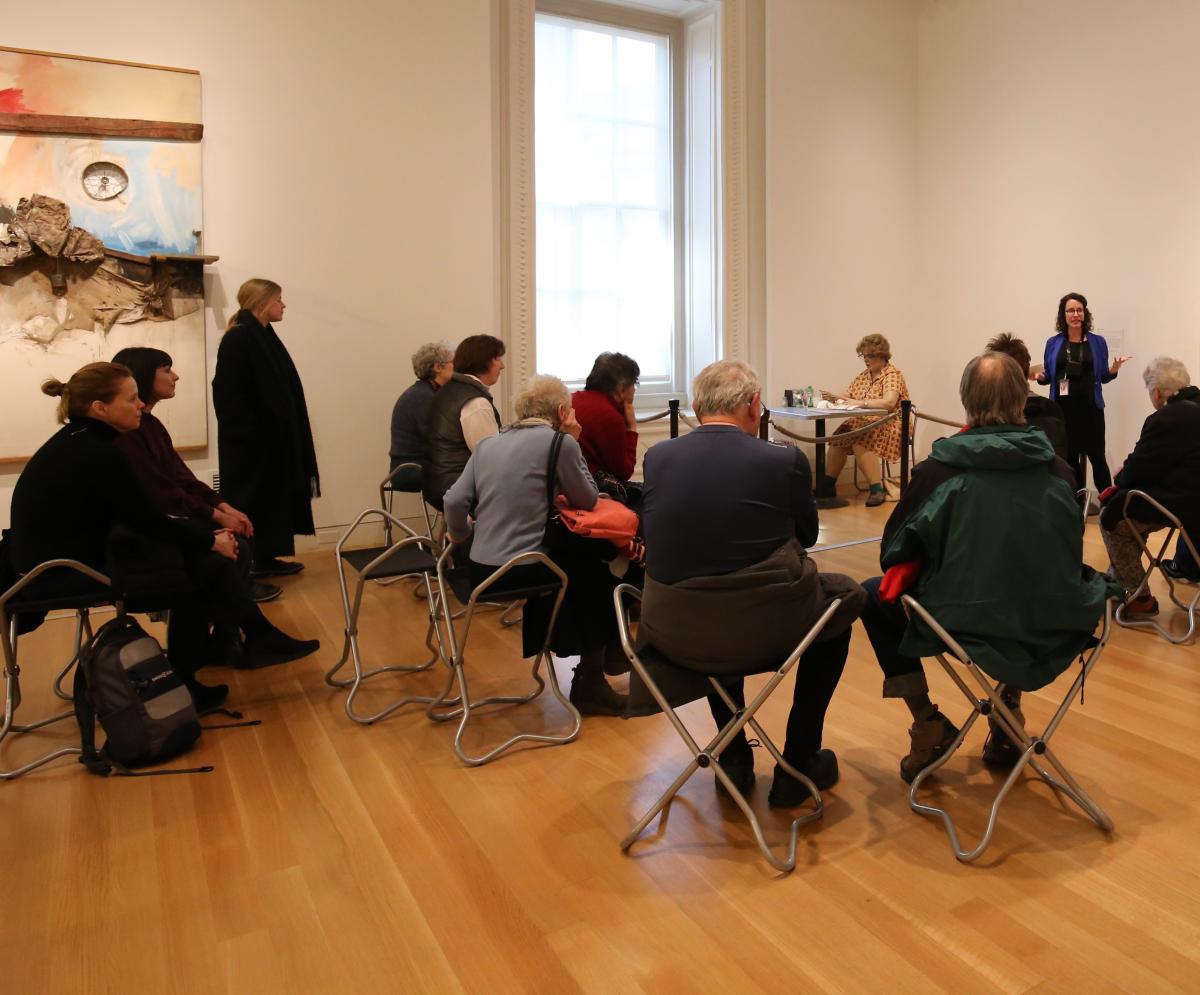Duane Hanson’s Woman Eating is strangely magnetic. Hyper-realistic, the sculpture captivates viewers who encounter it on the third floor of the Smithsonian American Art Museum. The woman at the center of the work appears fossilized from another era, frozen in an everyday moment. Yet she is sculpted, specifically made of fiberglass, a plastic material disguised to represent flesh and the human form.
The fiberglass in this sculpture is covered with oil and acrylic paints and accompanied by found accessories and objects. Woman Eating (1971) is an early work in Hanson’s series depicting everyday people, which he began the year before. To construct these figurative sculptures, Hanson developed a particular process of casting in order to use the synthetic substance.
I became interested in Hanson’s work with plastics while I was in residence as a predoctoral fellow at SAAM. I was working on my dissertation, Plastic Fantastic: American Sculpture in the Age of Synthetics, which considers how artists from the 1960s and 1970s used plastics. While Hanson (1925–1996) is not featured in my dissertation, I have always been curious about his use of synthetics, since he began experimenting with plastics in the early 1960s, before many of his contemporaries.
Hanson first encountered fiberglass while living in Germany in the 1950s. There, he met artist Georg Grygo, who was using the material in public art commissions. Hanson at the time was teaching art in the U.S. Army Dependent School System. By 1961, he was stateside again, living in Atlanta, and starting to experiment with fiberglass on his own, at a time when industrial companies were making plastics increasingly more available to artists.
Fiberglass is a hybrid plastic substance, marrying woven glass fibers with liquid polyester resin. First developed in the 1930s by the Owens-Corning Fiberglas Corporation, the material is made by splitting molten glass into thin filaments and weaving them together to produce textiles. The glass fabric is then dipped in or brushed with the liquid polyester resin as reinforcement and cured until rigid.
Fiberglass is especially adaptable for artists, as the glass cloth can be placed in a mold and then brushed with resin to create solid yet lightweight surfaces, akin to papier-mâché in process. Unlike other plastics that rely exclusively on industrial molding and extruding, fiberglass allows artists to work in the comfort of their own studios.
In making works like Woman Eating, Hanson first cast directly from live models, often friends. Casting was done in one day, as models were greased with Vaseline—to avoid any hair pulling in the process—and then covered with plaster and cheesecloth to create the molds. Hanson used these molds to create the fiberglass figures, building two or three layers of flesh-toned, liquid polyester resin and then the glass fibers until the structure was solid. Then the plastic forms were removed from the molds and painted. Early works like Woman Eating were painted with thick coats of oil paint, which he later touched up with acrylic. He added blemishes, veins, and other details, attaching hair, clothing, and accessories last, as the final pieces for the sculptural collage.
While the artist worked with fiberglass throughout the early 1970s, in 1976 Hanson started using polyvinyl, a different plastic material for casting that allowed for finer details. With this new substance, he was able to insert hairs one at a time instead of using wigs. Woman Eating, then, is an important example of the artist’s work in fiberglass, a material that allowed him to construct the arresting sculptures that continue to resonate with viewers today.
I am indebted to SAAM’s conservators, who shared their extensive research on this sculpture with me. Conservator Jamie Gleason’s work treating the work was featured on Eye Level in the blog post, Conserving Duane Hanson's Woman Eating.
Recently named Curator at The Kreeger Museum in Washington, D.C., Danielle O'Steen was a 2017-2018 Big Ten Academic Alliance Smithsonian Institution Predoctoral Fellow at SAAM. This blog post is based on a talk she gave at the museum as part of the Art Bites series, where SAAM’s research fellows share their discoveries about artworks from the collection.




















